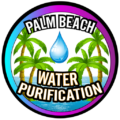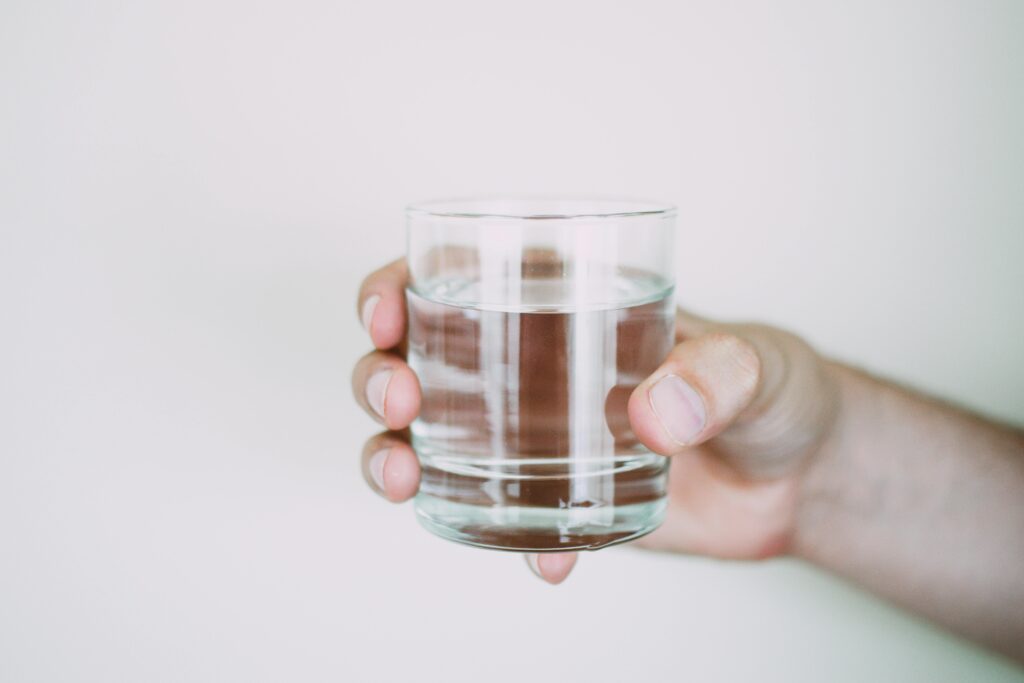Purification systems utilize complex techniques to soften, filter, and sanitize water. At Palm Beach Water Purification, we use multiple cutting-edge methods to deliver whole house water filtration. Here are some simplified explanations of our technical terms:
Hard Water
Before it reaches your home, water absorbs material from the ground in trace amounts. Hardness describes how much mineral content has accumulated, particularly magnesium and calcium. They build up in crystal deposits called scale, which make up the chalky film that develops around faucets. Processes that remove magnesium and calcium are called water softeners.
If left untreated, hard water can wear down plumbing and restrict water pressure by constricting the pipes. This may reduce the lifespan and efficiency of household appliances. Hard water also interferes with the chemical processes that make soap work, leaving dishes with white spots and clothes with a gritty texture. When used for bathing, hard water may irritate skin and dehydrate hair. Palm Beach Water Purification supplies water softeners to minimize wear and discomfort.
Activated Carbon
Filtration is one of the first steps in water purification. Initial systems run water through fine webbing made of pleated polyester or spun polypropylene. This removes sediment and clarifies the water. It also protects sensitive interior components from large sediments like sand, silt, or rust.
Activated carbon filters trap organic contaminants in treated charcoal, which has a microscopic sponge-like structure. Its shape allows water to flow through, and harmful chemicals bind to the sponge, leaving the water clean. Activated carbon filters help remove chlorine, pesticides, herbicides, and volatile organic compounds (VOCs).
Reverse Osmosis
Osmosis filtration systems use water’s chemical properties to remove microscopic impurities. They utilize a semi-permeable membrane, a barrier through which only water molecules can pass. When placed in a system, water naturally flows through it to areas of lower concentration, leaving contaminants behind. Reverse osmosis can remove pollutants too small for other filters to catch, including bacteria, viruses, and dissolved salts.
Ion Exchange
In water treatment, ions refer to electrically charged molecules of magnesium and calcium that contribute to hard water damage. Ion exchange filters soften water by trading those harmful ions for benign ones. The process involves running water through a tank filled with resin beads. Chemical reactions trap the magnesium and calcium inside the filter while releasing sodium ions in exchange, which are less harmful to your home. The system recharges the filter by running water from a brine tank through the beads. The pollutants can then be flushed out of wastewater pipes.
UV Sterilization
Ultraviolet, or UV, radiation kills potentially dangerous microorganisms that can cause disease. These systems purify water by exposing it to artificial light. UV sterilization is an environmentally friendly purification method because it leaves no residue and is chemical-free. It’s also helpful in eliminating pathogens missed by other filtration systems.
Comprehensive Whole House Water Filtration
Palm Beach Water Purification systems remove a wide range of contaminants common to Florida water, including bacteria and heavy metals. We provide customized solutions by offering comprehensive whole house water filtration systems, water softeners, and drinking water purifiers. Call today to schedule a water quality test for your home or well.

